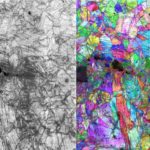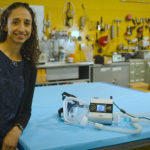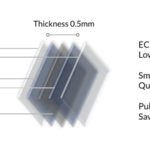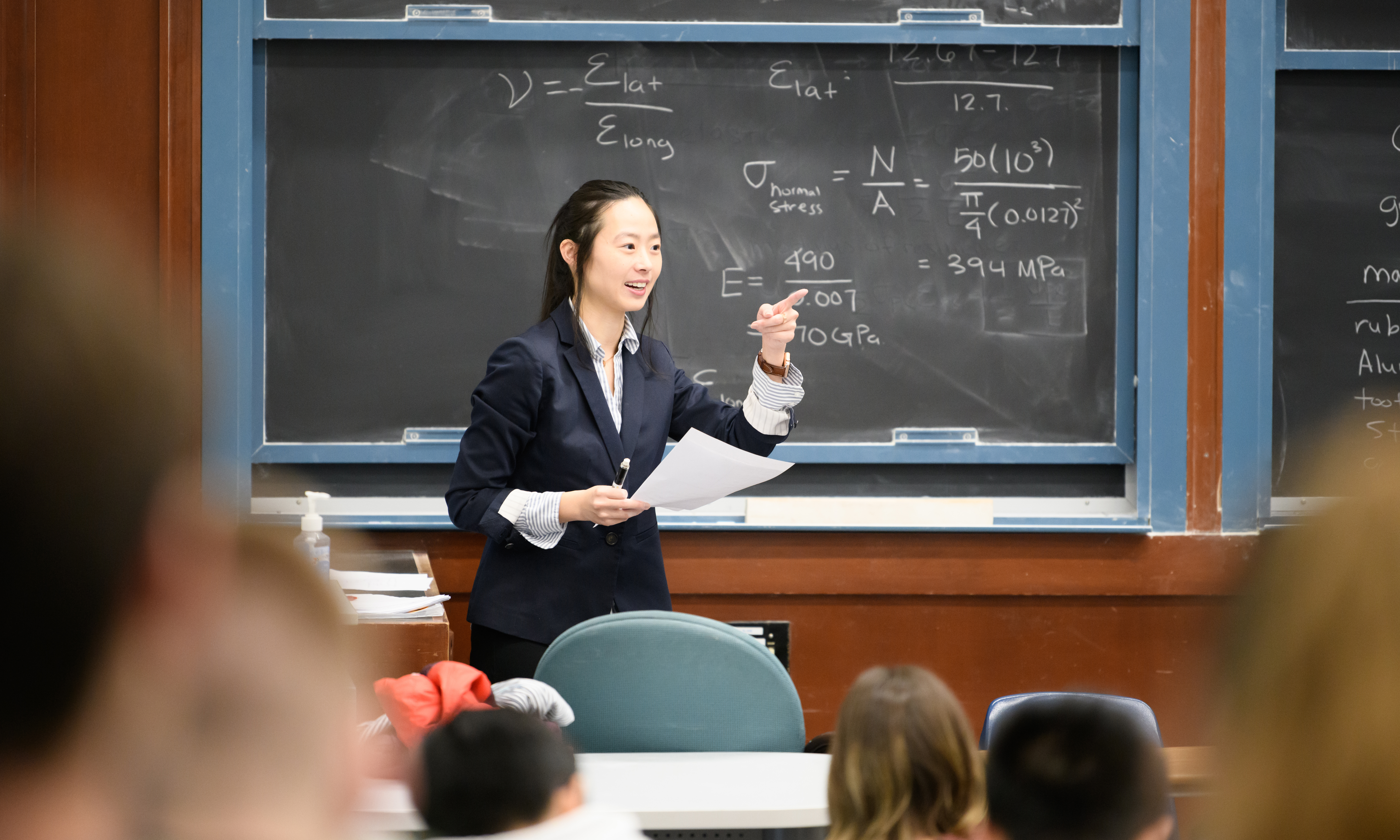Submarines and ships rely on towed sonar arrays (TSAs) for underwater exploration and security operations, but dragging these sensors through water, especially at high cruising speeds, creates excess noise that can mask target signals and compromise the sonar’s detection capabilities. Now, a team of Berkeley engineers is attempting to solve this problem with a little …
ME Assistant Professor Grace Gu Selected as Inaugural Recipient of the LLNL Early Career UC Faculty Initiative
Lawrence Livermore National Laboratory (LLNL) today announced that Grace Gu, a faculty member in mechanical engineering at the University of California (UC), Berkeley, has been selected as the inaugural recipient of the LLNL Early Career UC Faculty Initiative. The initiative is a joint endeavor between LLNL’s Strategic Deterrence Principal Directorate and UC national laboratories at the University of California Office of the …
Evolution on fast forward: Grace Gu engineers AI-optimized, bioinspired materials
The CITRIS principal investigator and assistant professor of mechanical engineering takes inspiration from nature and uses machine learning to create more efficient materials.
Evolution on fast forward: Grace Gu engineers AI-optimized, bioinspired materials
“CITRIS is really unique because it facilitates new collaborations in the UC system,” said Grace Gu, an assistant professor of mechanical engineering at the University of California, Berkeley, and a principal investigator (PI) at the Center for Information Technology Research in the Interest of Society and the Banatao Institute (CITRIS). “I wanted to explore a new …
Researchers develop innovative tool for measuring electron dynamics in semiconductors
At the heart of every mobile phone, laptop and autonomous vehicle is a tiny semiconductor whose properties and, ultimately, performance are determined by free electrons. Now, UC Berkeley researchers have developed a new way to measure these electrons that could lead to more energy-efficient semiconductor materials and electronics. As reported in Nano Letters, researchers demonstrated a …
Say Hello to the Toughest Material on Earth
Scientists have measured the highest toughness ever recorded, of any material, while investigating a metallic alloy made of chromium, cobalt, and nickel (CrCoNi). Not only is the metal extremely ductile – which, in materials science, means highly malleable – and impressively strong (meaning it resists permanent deformation), its strength and ductility improve as it gets …
Under the radar
Berkeley researchers have discovered a way to improve the wave-scattering abilities of piezoelectric materials, a finding that may lead to advances in noise cancellation, medical and stealth technologies. In a study published in the Journal of Applied Physics and selected as an editor’s pick, the researchers demonstrated that electro-momentum (EM) coupling, a newly discovered phenomenon …
ME Assistant Professor Grace Gu Named Sloan Research Fellow
Four UC Berkeley assistant professors have been awarded a Sloan Research Fellowship, one of the most prestigious honors given to early-career scientific researchers. The four are among 118 new 2022 fellows announced this week by the Alfred P. Sloan Foundation. The fellowships recognize young scholars whose “achievements and potential place them among the next generation of scientific …
Five Berkeley Top Scholars Named AAAS Fellows
Five Berkeley scholars — four faculty members and one research scientist — have been elected fellows of the American Association for the Advancement of Science (AAAS), one of the world’s largest scientific societies. The distinction was awarded this year to 489 scientists, engineers and innovators for their advancement of science and its applications.
UC Berkeley Team Creates Respiratory Devices From Sleep Apnea Machines
The coronavirus pandemic’s arrival earlier this year prompted Stephen McNally, a videographer for University Development and Alumni Relations (UDAR), to jump on a call with campus researchers discussing how they could turn their labs into workspaces to tackle COVID-19. Faculty member Grace O’Connell agreed to let McNally come to her lab and shoot her team at work …
Off the Scales: Fish Armor Both Tough and Flexible
Humans have drawn technological inspiration from fish scales going back to ancient times: Romans, Egyptians, and other civilizations would dress their warriors in scale armor, providing both protection and mobility. Now, using advanced X-ray imaging techniques, scientists have characterized carp scales down to the nanoscale, enabling them to understand how the material is resistant to …
ME Assistant Professor Grace X. Gu Named 2020 MRS Communications Lecturer
The Materials Research Society (MRS), along with its publishing partner, Cambridge University Press, congratulates Grace X. Gu, along with Chun-Teh Chen, both of the University of California, Berkeley on receiving the 2020 MRS Communications Lecture award for their paper, Machine learning for composite materials. Published March 27, 2019 MRS Communications Volume 9, Issue 2 Gu …
Capstone Project Profile: Affordable Electrochromic Glass
Electrochromic (EC) coating is one of the ways to alter glass attributes through the application of voltage on conductive layers. However, current manufacturing processes for such glass aren’t optimized and required high-end equipment resulting in high price tag for the product. To make it more accessible, this capstone project approaches from an unconventional angle. Instead …
UC Berkeley Professor Robert Ritchie Co-Leads Study on Fish Scales Which May Provide Better Armor
A project led by Robert Ritchie, professor of mechanical engineering and materials science at UC Berkeley, and Marc Meyers, professor of nanoengineering at UC San Diego, provides inspiration for fish scales to be used in armor.
Piranha-Proof Fish Scales Offer Inspiration for Better Armor
Arapaima gigas. Image by iStock.com/kurga The scales of the massive Amazonian freshwater fish, Arapaima gigas, are so tough that they do not tear or crack when a piranha—which has one of the animal kingdom’s sharpest bites—attacks. Material scientists have discovered the secret to the fish’s impermeable armor: each scale is made up of a highly …
Berkeley Professors Named Innovators Under 35
Two Berkeley Engineering professors — mechanical engineering’s Grace Gu and EECS’ Raluca Ada Popa — were included in MIT Technology Review’s list of “innovators under 35” today. This honor is given annually to technologists whose work has great potential to change the world.
New hydrogen fuel catalyst
A powerful new hydrogen fuel catalyst developed by Berkeley engineers relies on a surprising ingredient: gelatin, the same material that makes Jell-O desserts jiggle. Composed of nanometer-thin sheets of metal carbide, this catalyst works just as efficiently as platinum to generate hydrogen fuel from water, but at a much lower cost than the rare and …















